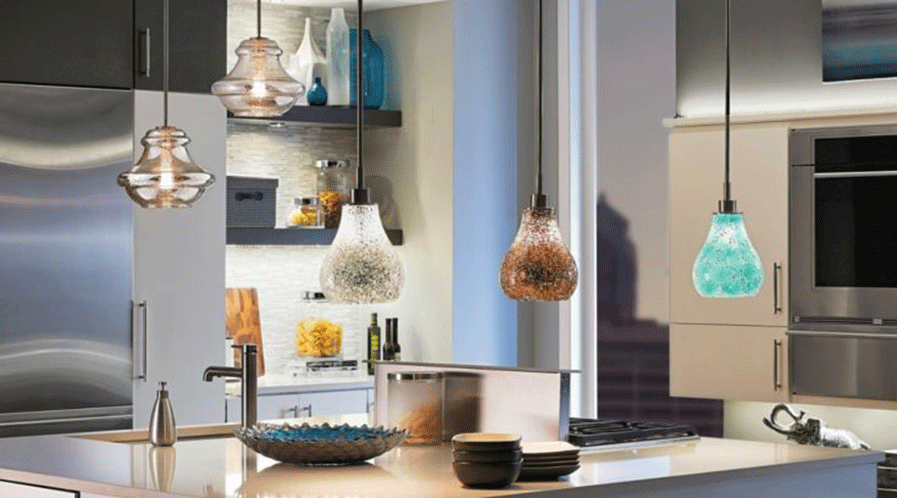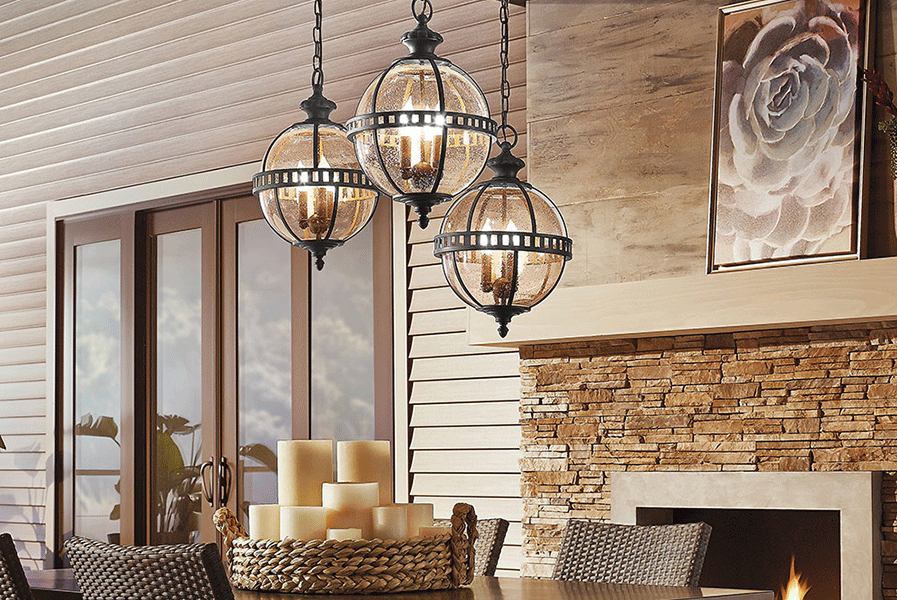ADVERTISEMENT

Lighting in a Kitchen
December 15, 2021
Remona Divekar
Lighting, if applied correctly, does not only allow the kitchen to easily adapt to suit the different needs, requirements, and moods of the person using it, but it can also enhance the overall appearance of the kitchen design, writes Remona Divekar.
The kitchen is often referred to as the ‘heart of the home’ and acts as a multifunctional space for many households. As the famous architect, Le Corbusier aptly said, “Architecture is the learned game, correct and magnificent, of forms assembled in the light.” Deciding whether the area requires cool or warm lighting is important as the colour tone can completely transform the room. Strategically placed lighting gives the kitchen what it needs the most, for the wide range of functions that kitchens perform that sets the standard for the rest of the home. For example, bright and shadow-free task lighting for safe cooking and preparation, atmospheric illumination to create a mood to make the room feel more inviting. If applied correctly, it not only allows the kitchen to easily adapt to suit the different needs, requirements, and moods of the person using it but it also enhances the overall appearance of the kitchen design.


Defining a role in the kitchens
Despite the fact that lighting is often left as an afterthought, it is an integral part of any kitchen design, most critical in the initial planning stages of any project as a way to make kitchens look more functional and enjoyable space. Interior designer Anish Motwani of Anish Motwani and Associates opines, “Some universal tips to keep in mind when lighting a kitchen, more specifically an Indian kitchen, is one should avoid indirect lights in the ceiling because in Indian kitchen there is a lot of smoke due to Indian spices. The plain ceiling look with a few Led light fixtures is best for the kitchen. Also, avoid overboard lighting. Having too many lights which is difficult to maintain later is also not a good idea. Define your areas of requirement and choose direct lights accordingly. Avoid colour changing LED strip lights or colour bulbs for kitchens.”
Illustrating other options N Sridhar Rao, authorised India Sales Partner for KICHLER, USA suggests to “Plan for lighting layers or multiple sources of light like ambient or general illumination, accent or decorative lighting and task lighting. Dimmers lighting provide options for illumination levels.” He further says that it is important to take the colour of cabinetry, flooring, and walls into consideration as well as the materials. “The darker these items are the more lumens that will be needed to illuminate the space. Also, the reflectiveness of the surface plays a part as well – glossy finishes bounce light around where matte ones don’t reflect light nearly as well.”
“Whether preparing food, cooking, or simply looking for the bread, good lighting in the kitchen highlights key areas and keeps the area at a good level of brightness at all times. The practice of implementing good lighting design is popular and cost-effective,” informs Vaishali Lahoti Shah – Chief Designer- Cuisine Regale Lighting, A Godrej Venture. “It should be directed onto work surfaces to dispel annoying shadows. Lighting around the base of units provides a feature and gives mood lighting in a functional area. If you have good natural light make the most of this with a glass roof, large opening doors, and light colours as nothing beats natural light. Linear LED lighting built into the furniture is a must, with the actual LED light source hidden from direct view as much as possible,” adds Shah.


Lighting and Zoning
There are several places, many of which some don't ever consider, adding lightings such as the kitchen cabinet lighting or kitchen lighting over the sink. These are just two places where extra lighting goes in order to accent the appliances and other kitchen fixtures. Countertops beneath cabinetry, open spaces above cabinetry, cabinetry with glass fronts, and islands all have unique lighting needs and opportunities. Under-cabinet lighting is a common fixture for task lighting on countertops. Toe kick, coved ceilings, open shelving, or lighting in open soffits adds ambiance while recessed or recessed alternative lighting adds general illumination. Decorative lighting is frequently used above sinks and islands.
Shah says, "For open-plan multi-application spaces, it’s vital to create adequate numbers of zones of light to provide flexibility to suit the applications and time of day or night. Forget grids of downlights; use light only where it is required. Work surfaces need good task lighting, whether it is from downlights or pendants. For the kitchen itself, task lighting requires to be available at suitable light levels on separate zones, with further zones of light to enhance the furniture, space and create a feature to provide an ambient light level. The dining and living areas may require to respond to the space work as one, or individually. A good simple lighting scene system can offer the user control to make the space work coherently. It is a project that many homeowners choose to undertake in order to give their kitchens an extra personal touch and have it stand out from others.”
Lights over a kitchen counter often work best placed above the edges of the counter but angled across it to create glare-free lighting. In the kitchen area using directional spotlights angled towards the cupboards and walls can increase the sense of space. The light is reflected back into the room and is much more effective than shining the light straight down at the floor. Lights fitted near hobs fit flush to the wall or ceiling – make them easy to wipe clean. Using fittings with a covered glass is ideal. In kitchens with high ceilings, adding up lights to the tops of cabinets adds general light to the space so will need fewer downlights.

Kitchen lighting for subtle colours

The future of kitchen lighting
LED is not going away – it lasts a long time, and saves on electricity costs; both are huge benefits. LED continues to get smaller, allowing for more design freedom and the ability to incorporate it into spaces where bulbs won’t fit. The impact of lighting on humans will continue to gain awareness.
From how the colour of light affects health to productivity to the mood as well as the environmental sustainability and energy savings play a crucial role. The right lighting can introduce several levels of brightness, make small kitchens feel larger, the creativity of designs can dramatically alter their mood and feel. Therefore it becomes imperative to invest in a good format that provides good task lighting, creating the ideal ambience.
Kitchen lighting offers endless possibilities. ‘Smart’ homes are the wave of the future. It can preset and administer lighting in all rooms of the house through one centralised computer network, all through a computerised keypad. Just as the layers of lighting are combined in a variety of ways, so are the methods of controlling them. The best part is that the lighting options just keep expanding.
Application of different types of lighting in kitchen
Each of the types of lighting serves a different purpose. Ambient lighting is low intensity and creates a soft glow that makes it safe to work in most areas of the kitchen. The right amount of ambient lighting forms such as flush-mounted ceiling fixtures, a pendant hanging over the island, and adjustable track lighting attracts people into the kitchen and makes them feel welcoming.
Accent lighting is the least common layer in the kitchen but is becoming more common as people spend more time in the kitchen for casual entertaining, designed to show things off. It doesn't make the working areas of the kitchens more functional places but its aesthetic value has made it popular with homeowners performing kitchen renovations nonetheless.

A good simple lighting scene system can offer the user control to make the space work coherently. It is a project that many homeowners choose to undertake in order to give their kitchens an extra personal touch and have them stand out from others.

Vaishali Lahoti Shah
Chief designer
Cuisine Regale Lighting - A Godrej Venture
Task lighting is a type of kitchen lighting that provides a more high-intensity glow. It's because of this that task lighting is often limited to places like the sink and cabinets, where being able to see is important.
Decorative lighting allows making the space truly personal. Whatever the design of the lights, it's important to remember the old saying of ‘less is more’ with decorative lighting. Overdoing it with decorative lighting can make for a gaudy and flashy appearance whereas a minimalist approach can bring an understated refinement to the room.
Overhead lighting is the most common form of lighting as it is also considered more purposeful instead of several smaller lights than one large overhead light because the light is spread out over a wider area. Lamp lights and small spotlights are good for kitchens, as they provide a small pool of light focused on a certain area as well as add an impact and visual interest between the dining and kitchen areas.





























